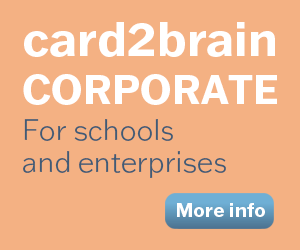FHNW
Set of flashcards Details
| Flashcards | 73 |
|---|---|
| Language | English |
| Category | Micro-Economics |
| Level | University |
| Created / Updated | 24.06.2020 / 20.12.2024 |
| Weblink |
https://card2brain.ch/cards/20200624_microeconomics?max=40&offset=40
|
| Embed |
<iframe src="https://card2brain.ch/box/20200624_microeconomics/embed" width="780" height="150" scrolling="no" frameborder="0"></iframe>
|
Which one of the following statements is correct?
Which one of the following statements is correct?
ROLEY is a high-end producer of smoothies. It is well known, and its products are truly sought-after. With respect to a box containing 10 bottles each, each of their clients has the following inverse demand function:
P = 12 – 0.5 Qd
Qd : quantity demanded
P : unit price
The marginal cost of producing one box of 10 bottles is 2. ROLEY now follows a pricing strategy based on block pricing. If the price of the first block is equal to the price charged in the absence of price discrimination, the unit price for the second block and the quantity of the second block (for each individual commercial client) are as follows:
Which one of the following statements is correct? 2 points
I. A Nash equilibrium describes a situation in which there exists at least one dominant strategy for one player.
II. In a Nash equilibrium the aggregate payoff of the players is maximised.
III. At the Nash equilibrium, expected behaviour and actual behaviour converge.
In a repeated prisoner’s dilemma game, the likelihood of a cooperative outcome increases if: 2 point
AtlanticWings is a nationall airline that was recently granted a new route. It estimates that the aggregate annual market demand function for that route is as follows:
Qdair travel = 25,000 – 50 P air travel
Qd air travel : number of one-way tickets bought in one year
P air travel : unit price for a one-way air ticket
Assume the marginal cost of the transportation of one passenger is constant and amounts to CHF 40. For the purpose of this question, neglect fixed cost (i.e. assume that there is no fixed cost).
If fixed cost is not taken into account, how much profit would AtlanticWings earn with that route? 2
With marginal cost at 40 and a unit price of 270 a profit of 230 is generated by each ticket sold. With a quantity of 11,500, total profit amounts to
11,500 x 230 = 2,645,000
AtlanticWings is a nationall airline that was recently granted a new route. It estimates that the aggregate annual market demand function for that route is as follows:
Qdair travel = 25,000 – 50 P air travel
Qd air travel : number of one-way tickets bought in one year
P air travel : unit price for a one-way air ticket
AtlanticWings has conducted some market research and found out that its clients can be grouped into business clients who indicate a willingness to pay extra to fly business class, and holiday travellers choosing “economy class”. The aggregate demand curve of business travellers is P business = 4500 – 0.5Q business and the aggregate demand curve of economy class passengers is
P economy = 333 – 0.021 Q economy.
The marginal cost for transporting both types of passengers is 40.
AtlanticWings now decides to switch to third degree-price discrimination.
b1) Find the profit maximising price and quantity for business class passengers.
MR = MC = 40 = 4500 – 1Q
Q = 4,460
P business = 4500 – 0.5 Q business
P business = 4500 – 2230 = 2,270
AtlanticWings is a nationall airline that was recently granted a new route. It estimates that the aggregate annual market demand function for that route is as follows:
Qdair travel = 25,000 – 50 P air travel
Qd air travel : number of one-way tickets bought in one year
P air travel : unit price for a one-way air ticket
AtlanticWings has conducted some market research and found out that its clients can be grouped into business clients who indicate a willingness to pay extra to fly business class, and holiday travellers choosing “economy class”. The aggregate demand curve of business travellers is P business = 4500 – 0.5Q business and the aggregate demand curve of economy class passengers is
P economy = 333 – 0.021 Q economy.
The marginal cost for transporting both types of passengers is 40.
AtlanticWings now decides to switch to third degree-price discrimination.
b2)Find the profit maximising price and quantity for economy class passenger
MR = MC = 40 = 333 – 0.042 Q
293 = 0.042 Q
Q = 6,976
P economy = 333 – 0.021 Q economy
P economy = 333 – 0.021 x 6,976 = 186.5
AtlanticWings is a nationall airline that was recently granted a new route. It estimates that the aggregate annual market demand function for that route is as follows:
Qdair travel = 25,000 – 50 P air travel
Qd air travel : number of one-way tickets bought in one year
P air travel : unit price for a one-way air ticket
AtlanticWings has conducted some market research and found out that its clients can be grouped into business clients who indicate a willingness to pay extra to fly business class, and holiday travellers choosing “economy class”. The aggregate demand curve of business travellers is P business = 4500 – 0.5Q business and the aggregate demand curve of economy class passengers is
P economy = 333 – 0.021 Q economy.
The marginal cost for transporting both types of passengers is 40.
AtlanticWings now decides to switch to third degree-price discrimination.
If fixed costs are not taken into account, how much total profit would AtlanticWings make with third-degree price differentiation?
Profit made in the business class:
(2,270 – 40) x 4,460 = 9,945,800
Profit made in the economy class:
(186.5 – 40) x 6,976 = 1,021,984
Total profit: 10,967,784
AtlanticWings is a nationall airline that was recently granted a new route. It estimates that the aggregate annual market demand function for that route is as follows:
Qdair travel = 25,000 – 50 P air travel
Qd air travel : number of one-way tickets bought in one year
P air travel : unit price for a one-way air ticket
Please compare your answers to questions a) and b3). Comment!
10,967,784 – 2,645,000 = 8,322,784
Due to third degree price discrimination profit could be much increased (by 314%).
In your job for the private office of a wealthy family, you have to make rational investment decisions. Presently, you are faced with two investment opportunities. The first is an investment project with a sure payoff of 5,200,000. As your second option, you could invest the same amount in a highly risky investment project. If that project goes well, the return would be 12,800,000. However, if it fails, there will be no return whatsoever. According to your estimates, the probability of earning the 12,800,000 is 35 percent only.
a) In the case of the highly risky investment project (i.e., the lottery), what is the probability that there will be no return whatsoever?
65%
In your job for the private office of a wealthy family, you have to make rational investment decisions. Presently, you are faced with two investment opportunities. The first is an investment project with a sure payoff of 5,200,000. As your second option, you could invest the same amount in a highly risky investment project. If that project goes well, the return would be 12,800,000. However, if it fails, there will be no return whatsoever. According to your estimates, the probability of earning the 12,800,000 is 35 percent only.
Calculate the expected value of the highly risky investment project (i.e., the lottery
EV lottery = 0.35 12,800,000 + 0.65 0 = 4,480,000
In your job for the private office of a wealthy family, you have to make rational investment decisions. Presently, you are faced with two investment opportunities. The first is an investment project with a sure payoff of 5,200,000. As your second option, you could invest the same amount in a highly risky investment project. If that project goes well, the return would be 12,800,000. However, if it fails, there will be no return whatsoever. According to your estimates, the probability of earning the 12,800,000 is 35 percent only.
C) Given the family office (i.e., your employer) is risk averse and has a utility function determined by U = (Expected Value)0.5 , find the risk premium associated with the highly risky investment project (i.e., the lottery).
0.35 12,800,0000.5 + 0.65 0 = (5,200,000 – RP) 0.5
1,252.2 = (5,200,000 – RP) 0.5
1,568,004.85 = 5,200,000 – RP
RP = 3,631,995.15
In your job for the private office of a wealthy family, you have to make rational investment decisions. Presently, you are faced with two investment opportunities. The first is an investment project with a sure payoff of 5,200,000. As your second option, you could invest the same amount in a highly risky investment project. If that project goes well, the return would be 12,800,000. However, if it fails, there will be no return whatsoever. According to your estimates, the probability of earning the 12,800,000 is 35 percent only
Explicate what is meant by the term “risk premium”.
The term “risk premium” describes the necessary difference between the expected value of a lottery and the payoff of a sure thing to make a risk averse decision maker indifferent between the lottery and the sure thing. It is the amount by which the payoff of the sure thing must decrease to make the decision maker indifferent between it and the lottery.
Which-one(s) of the following statement(s) is/are correct?
I. According to the theory of comparative advantage, free trade between two countries is mutually beneficial, if each country specialises in the production of those goods where the opportunity cost of producing another unit is only marginally higher than in the other country.
II. According to the theory of comparative advantage, free trade between two countries is mutually beneficial, if each country specialises in the production of those goods where the opportunity cost of producing another unit is lower than in the other country.
III. According to the theory of comparative advantage, free trade between two countries is mutually beneficial only, if at least one country has an absolute advantage in the production of one good.
1. Which of the following statements is true?
Suppose that a consumer has utility function U = .1h + f. Which of the following is true?
A utility function written as U = Axy, where x and y are goods and and are constants represents:
Which of the following does not represent the same preferences as U = xy?
Suppose that the price of good A is $4, the price of good B is $2 and the consumer's
income is $60. Which of the following baskets is not on the consumer's budget line?
At a consumer's interior optimum solution, which of the following will not necessarily
hold true when the consumer can purchase goods x and y?
Identify the statement that is false:
Economists describe consumer choice as a constrained optimization problem. What is the
consumer trying to do?
Which of the following is NOT a characteristic of a perfectly competitive market?
Which of the following statements could be true for a perfectly competitive industry?
A firm's total cost function is: TC = 100 + q. What is the shut-down condition of this
firm?
Each firm in a perfectly competitive industry has the total cost curve: TC(q) = q2 + 100.
The associated marginal cost is MC = $2q. What is the short run firm supply curve for this
industry?
Is the following true or false? "It is not possible for consumers' surplus and producers'
surplus to rise and for a deadweight loss to occur, simultaneously."
Ans: False
Response: Consider the case of a subsidy. In this case, you can see from the diagram that
producers' surplus and consumers' surplus rise, but a deadweight loss is created because
production past the point where the willingness to pay of consumers equals the opportunity
cost of resources. For units between Q* and Q2, the subsidy causes consumers to demand the
product even though their willingness to pay falls below the opportunity cost. [Image:
Fig10001.gif] Another way to think of the problem is the following: while total surplus is
producers' surplus plus consumers' surplus, we must also factor in the cost of the program
that is put in place. Here, the deadweight loss occurs because the government must pay
consumers to purchase past the equilibrium point and this money must come from
somewhere. The deadweight loss occurs because the cost of this program exceeds its benefits
by causing a misallocation of resources towards purchase of this product.
Section: 10.4 Subsidies
When we say that the perfectly competitive market equilibrium is efficient, we mean that:
The equilibrium conditions in a perfectly competitive market where a subsidy, T, is paid
to producers are:
Consider a perfectly competitive market with market supply QS = 5P and QD = 200 - 5P.
What is consumer surplus in this market?
Consider a perfectly competitive market with market supply QS = 10P and market demand
QD = 420 – 60P. What is total surplus in this market?
Which of the following statements is false?









